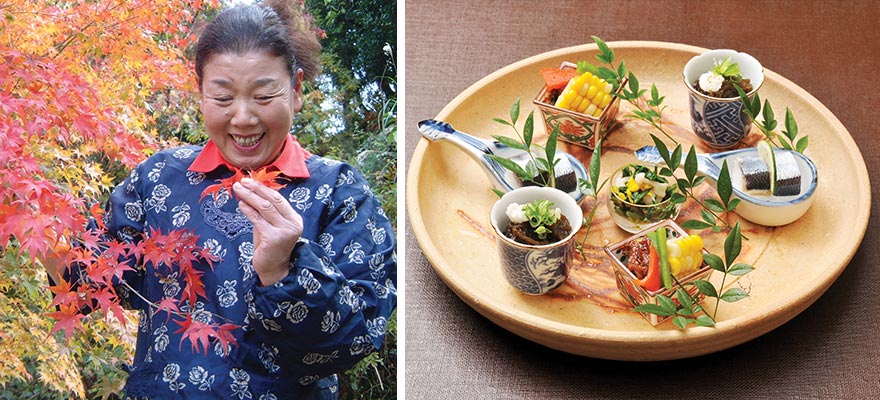Home > Highlighting JAPAN >Highlighting Japan June 2014>Revitalizing Japan's Regions
Highlighting JAPAN
Revitalizing Japan's Regions
Turning Over A New Leaf
Kamikatsu town

Tokushima Prefecture's Kamikatsu is famous in Japan as a town that has found a successful formula for regional revitalization by creating employment for the elderly and giving them a new purpose in life. We spoke to Tomoji Yokoishi, the driving force behind the business, about how the idea came about and about the road to success.
When Yokoishi came to Kamikatsu in 1979, he found a town suffering from depopulation and a growing percentage of elderly residents. Then a severe cold spell in 1981 dramatically diminished the harvest of Kamikatsu's main crop of mandarin oranges—something particularly troubling to Yokoishi, since he was working for Japan Agriculture to support the town's agricultural business.
In 1986, Yokoishi was sitting in a Japanese restaurant when he spotted customers taking home the decorative leaves that garnished their food. As a mountain town, Kamikatsu was certainly not short of leaves, and he wondered if they could become a new product.
Yokoishi's radical proposal to harvest and sell foliage met intense opposition, however, and in the first year only four households agreed to participate. Sales were minimal. "We just didn't know what our buyers wanted," he admits.
To find out what buyers did want, Yokoishi studied and traveled to nearby Osaka and Kyoto and then throughout Japan at his own expense, refining product quality, presentation and his understanding of just when to pick what.
Along with better marketing campaigns and proper packaging, Yokoishi was equally eager to improve rapport with his team. Along with business orders, he began sending faxes to Kamikatsu's farmers, sometimes attaching handwritten, personalized notes to encourage and motivate them.
Yokoishi also took customer feedback to heart and began operating with the seriousness of a well-planned production. Promotional efforts paid off as well, and sales had jumped 18 times as of 1988. Crucially, more of the town's farming households came on board, with 44 households participating, most of them elderly.
Yokoishi later began using IT for faster order processing through a point of sale (POS) system. Surprisingly, the elderly farmers—whose average age is seventy—adjusted to using PCs and now tablet computers to track orders, manage inventory and monitor sales.
That's impressive enough as a business story. Yokoishi, however, observes benefits far greater than sales. Medical costs are much lower, he says, and Kamikatsu's elderly visit doctors less frequently than in comparable towns with aging populations. This is both because they are healthier and because the time they once spent at clinics has been filled with lots of productive activities at work.
In 1999, Yokoishi founded a company called Irodori to manage the leaf business. Five years ago Irodori set up an internship to attract people from outside Kamikatsu, particularly young people, since the town now has fewer than two thousand residents. One aim is for elderly residents to learn new ideas from young people. Yokoishi notes that country life can sometimes limit access to the latest news, so "old people can receive valuable information from young people" through the internship. Similarly, young people can learn from their elders, who not only have significant agricultural know-how but life experience to impart as well. "Being able to share one's knowledge and experience does wonders for keeping people in good spirits," he points out.
Yokoishi says the most valuable benefit of the Irodori project has been to give residents a reason to wake up early in the morning: a sense of purpose. "I think it's incredibly important for people to have a purpose and know what their place is in society . . . and that's especially true for the elderly," he concludes.
© 2009 Cabinet Office, Government of Japan






